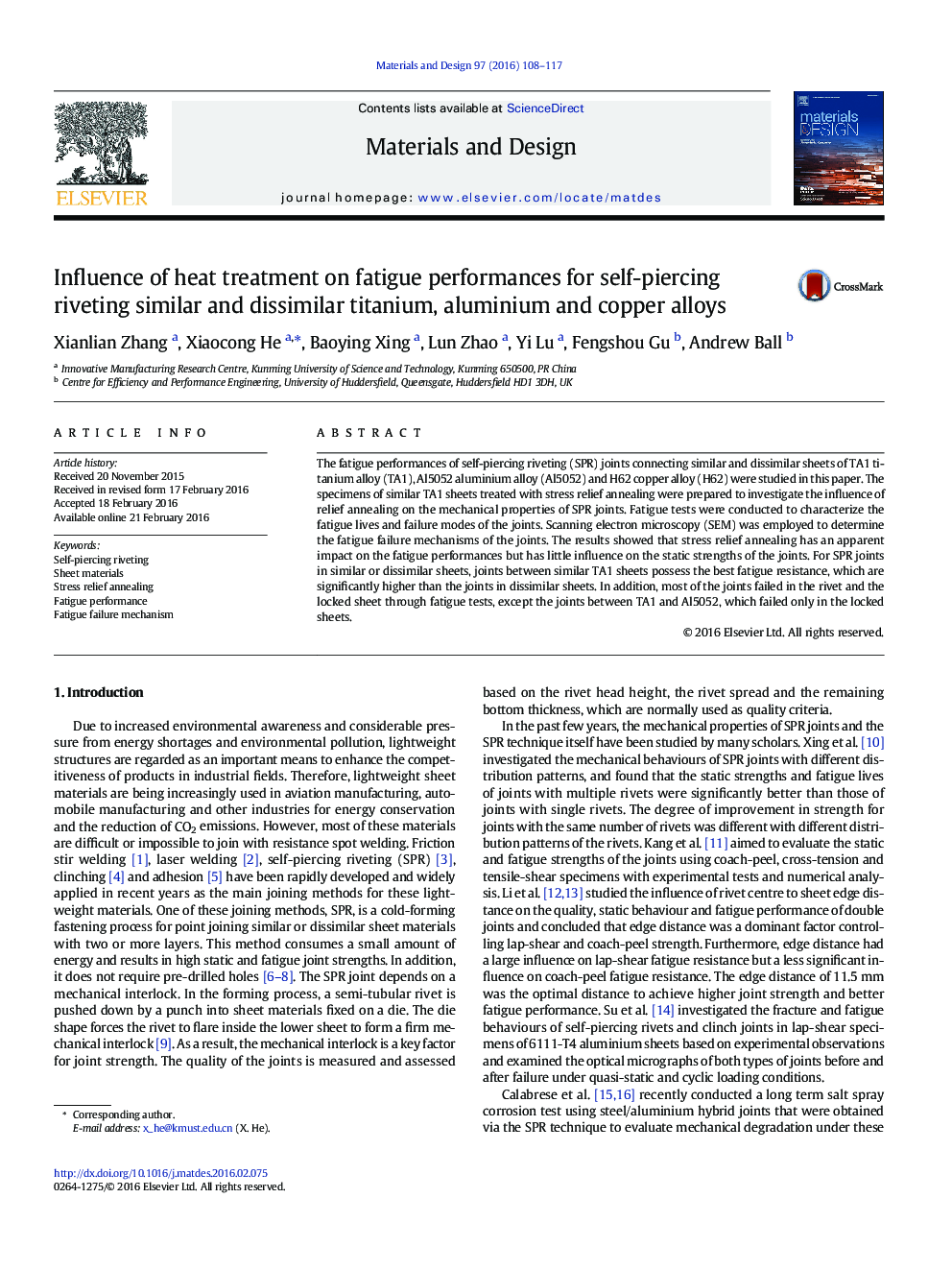| Article ID | Journal | Published Year | Pages | File Type |
|---|---|---|---|---|
| 828058 | Materials & Design | 2016 | 10 Pages |
•Self-piercing riveting of similar and dissimilar metal sheets of titanium, aluminium and copper alloys was studied.•Fatigue tests were conducted to characterize the fatigue lives and the failure modes of the self-piercing riveted joints.•The failure surfaces were examined by scanning electron microscopy to analyze the fatigue and fretting mechanism.
The fatigue performances of self-piercing riveting (SPR) joints connecting similar and dissimilar sheets of TA1 titanium alloy (TA1), Al5052 aluminium alloy (Al5052) and H62 copper alloy (H62) were studied in this paper. The specimens of similar TA1 sheets treated with stress relief annealing were prepared to investigate the influence of relief annealing on the mechanical properties of SPR joints. Fatigue tests were conducted to characterize the fatigue lives and failure modes of the joints. Scanning electron microscopy (SEM) was employed to determine the fatigue failure mechanisms of the joints. The results showed that stress relief annealing has an apparent impact on the fatigue performances but has little influence on the static strengths of the joints. For SPR joints in similar or dissimilar sheets, joints between similar TA1 sheets possess the best fatigue resistance, which are significantly higher than the joints in dissimilar sheets. In addition, most of the joints failed in the rivet and the locked sheet through fatigue tests, except the joints between TA1 and Al5052, which failed only in the locked sheets.
Graphical abstractHistogram of fatigue properties of different self-piercing riveted joints.Figure optionsDownload full-size imageDownload as PowerPoint slide
